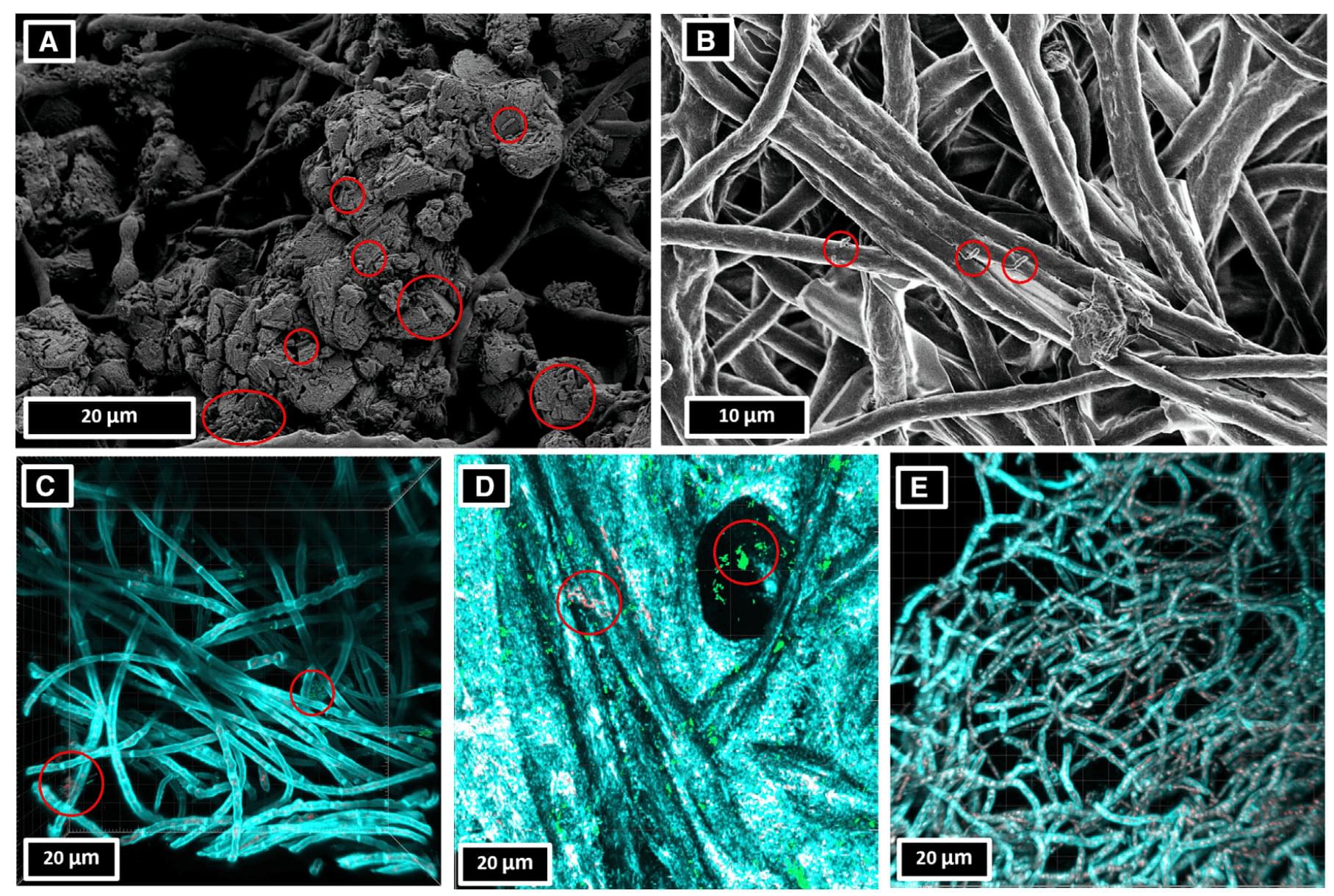Did Mars once have a full magnetic field in its ancient past like Earth does today, or was it lopsided and only covered one-half of the planet? This is wha | Space
The study notes, “These findings underscore the complexity of Europa’s plume activity. Our results provide a framework to explore various plume characteristics, including gas drag, particle size, initial ejection velocities, and gas production rates, and the resulting plume morphologies and deposition outcomes.”
How do the water vapor plumes on Jupiter’s icy moon, Europa, contribute to the interaction between the moon’s surface and subsurface environments? This is what a recent study published in The Planetary Science Journal hopes to address as a team of researchers investigated how gas drag could influence the direction of particles being emitted by Europa’s water vapor plumes, specifically regarding where they land on the surface, either near the plumes or farther out. This study has the potential to help scientists better understand the surface-subsurface interactions on Europa and what this could mean for finding life as we know it.
Artist’s illustration of Europa’s water vapor plumes. (Credit: NASA/ESA/K. Retherford/SWRI)
For the study, the researchers used a series of computer models to simulate how the speed and direction of dust particles emitted from the plumes could be influenced by a process called gas drag, which could decrease the speed and direction of dust particles exiting the plumes. In the end, the researchers found that gas drag greatly influences dust behavior, with smaller dust particles ranging in size from 0.001 to 0.1 micrometers becoming more spread out after eruption and larger dust particles ranging in size from 0.1 to 10 micrometers landing near the plume sites.
Tesla is navigating challenges in the EV market, including supply chain issues and production adjustments, while maintaining optimism about advancements in self-driving technology and preparing for future earnings ## Questions to inspire discussion ## Tesla’s FSD Progress.
🚗 Q: How has Tesla’s FSD version 13 performed in recent tests? A: FSD v13 on hardware 4 showed incredible performance with no unplanned disengagements over 490 miles of winding mountain and coastal roads, including navigating flagger-regulated oncoming traffic.
🌎 Q: What are the expectations for Tesla’s FSD version 14? A: FSD v14 is expected to be overfit for Austin and potentially deployed unsupervised globally in a short timeframe, subject to regulatory approval. Tesla’s Manufacturing and Supply Chain.
🔋 Q: How is Tesla addressing rare earth element concerns in motor production? A: Tesla’s rare earth free motors use 25% less rare earth elements than industry average, positioning them well against China’s export controls on 7 rare earth elements, including neodymium.
📊 Q: What insights might Tesla’s upcoming earnings call provide? A: The April 22nd earnings call will likely address supply chain and margin impacts from China’s rare earth export controls, battery supply constraints, and tariff effects. Tesla’s Product Updates.
📷 Q: What undocumented changes are included in Tesla’s AI4 vehicles spring release? A: The release includes a wider angle rear view, side repeater cameras at the top, and B-pillar dash cam and Sentry mode video recording capabilities.
Tesla is advancing its full self-driving technology in Austin, Texas, with plans for an unsupervised robo taxi service by June 2025, positioning itself for significant revenue growth and regulatory approval through enhanced safety and efficiency ## ## Questions to inspire discussion Operational Efficiency.
🏭 Q: How is Tesla using unsupervised FSD at Giga Texas? A: Tesla is using unsupervised FSD to drive new Model Y and Cybertruck units from production lines to outbound logistics lots, logging over 50,000 driverless miles between Texas and Fremont factory deployments.
💰 Q: What are the benefits of automating car movement at Giga Texas? A: Automating car movement reduces labor costs, improves throughput, creates a scalable logistics model, and boosts production margins. Regulatory Advantage.
🚗 Q: How does Tesla benefit from Texas regulations regarding autonomous vehicles? A: Texas laws don’t require permits for autonomous vehicles, providing Tesla with a regulatory advantage and a lower-risk proving ground before public rollout of robo taxis. Technological Edge.
🖥️ Q: What hardware advantages does Tesla’s FSD system have over competitors? A: Tesla’s vision-only FSD with Tesla-designed HW4 uses no LIDAR or radar, accelerating the data flywheel with unsupervised miles accumulated. Future Prospects.
🚕 Q: When and where will Tesla launch its first public unsupervised robo taxi service? A: Tesla plans to launch its first public unsupervised robo taxi service in Austin as a pilot rollout in June 2025.
Cases of patients who recovered from trauma after dreaming under surgical anesthesia spur Stanford Medicine researchers to investigate dreaming as therapy.
A new study by Brown University researchers suggests that gold nanoparticles—microscopic bits of gold thousands of times thinner than a human hair—might one day be used to help restore vision in people with macular degeneration and other retinal disorders.
In a study published in the journal ACS Nano, the research team showed that nanoparticles injected into the retina can successfully stimulate the visual system and restore vision in mice with retinal disorders. The findings suggest that a new type of visual prosthesis system in which nanoparticles, used in combination with a small laser device worn in a pair of glasses or goggles, might one day help people with retinal disorders to see again.
“This is a new type of retinal prosthesis that has the potential to restore vision lost to retinal degeneration without requiring any kind of complicated surgery or genetic modification,” said Jiarui Nie, a postdoctoral researcher at the National Institutes of Health who led the research while completing her Ph.D. at Brown. “We believe this technique could potentially transform treatment paradigms for retinal degenerative conditions.”
In around a period of 30 minutes the United States can launch over 1,000 nuclear weapons against its enemies. This video is a realtime simulation of such an action.
Sources:
Probable Nuclear Targets in United Kingdom, 1972: https://robedwards.typepad.com/files/probable-nuclear-target…chives.pdf.
Probable Nuclear Targets in France: https://upload.wikimedia.org/wikipedia/commons/thumb/f/f0/NA…en.svg.png.
Soviet Union Central European Target List, 1979: https://brilliantmaps.com/ww3-europe/
United States Target List, 1956: https://nsarchive2.gwu.edu/nukevault/ebb538-Cold-War-Nuclear…plete.pdf.
Listening to favorite music activates the brain’s opioid system, which is involved in feelings of pleasure and pain relief, according to a new PET imaging study.









